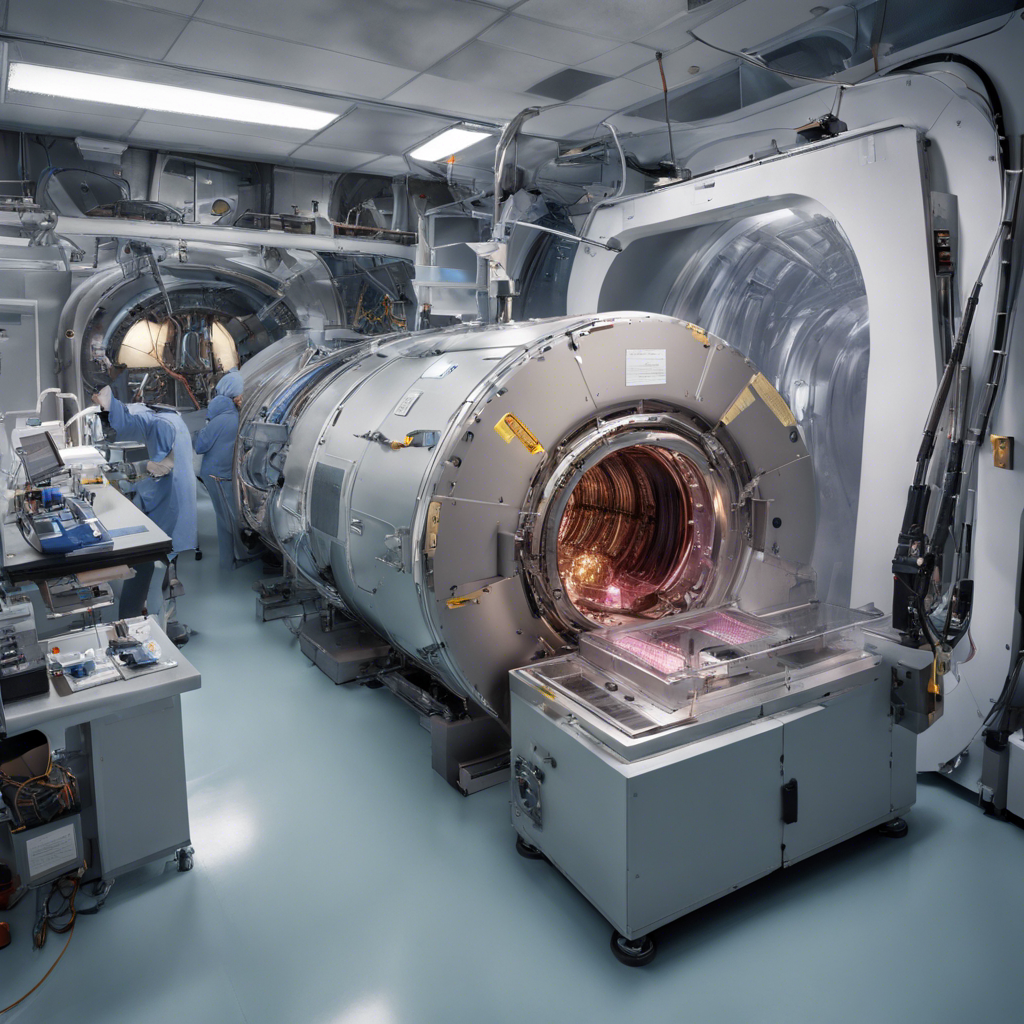Compact Particle Accelerator Breaks Barriers with High-Energy Electron Beam

Researchers at The University of Texas at Austin Develop Compact Particle Accelerator with Unprecedented Energy Levels
Particle accelerators have long been hailed as powerful tools for various applications, from semiconductor technology to medical imaging. However, their large size and cost have limited their availability to only a few national labs and universities. Now, a team of researchers from The University of Texas at Austin, in collaboration with national laboratories, European universities, and TAU Systems Inc., has achieved a groundbreaking milestone by developing a compact particle accelerator that produces an electron beam with an energy of 10 billion electron volts (10 GeV) in a chamber less than 20 meters long. This achievement opens up new possibilities for semiconductor testing, advanced medical imaging, and cancer therapies.
Compact and Powerful: The Advanced Wakefield Laser Accelerator
The advanced wakefield laser accelerator, developed by the team led by Bjorn “Manuel” Hegelich, associate professor of physics at UT and CEO of TAU Systems, is a compact particle accelerator that operates on a novel principle. Unlike traditional accelerators that require kilometers of space, this accelerator can achieve high electron energies in a chamber as small as 10 centimeters. The key to its success lies in the use of nanoparticles and plasma waves.
Harnessing Plasma Waves and Nanoparticles
The concept of wakefield laser accelerators was first proposed in 1979. In this type of accelerator, an extremely powerful laser strikes helium gas, creating plasma waves that propel electrons to high energies. Hegelich’s team made a significant advancement by introducing metal nanoparticles into the gas cell. These nanoparticles, injected by an auxiliary laser, enhance the energy delivered to the electrons from the plasma waves. The nanoparticles act as “Jet Skis” that precisely release electrons at the right time and location, effectively increasing the number of electrons riding the plasma wave.
Versatile Applications: From Space Electronics Testing to Medical Imaging
The compact accelerator developed by the team has a wide range of potential applications. One area of interest is testing the resilience of space-bound electronics to radiation. By subjecting electronic components to the high-energy electron beam, researchers can assess their durability and performance in space environments. Additionally, the accelerator’s ability to generate high-energy electron beams opens up possibilities for advanced medical imaging techniques. By imaging the 3D internal structures of new semiconductor chip designs, researchers can gain valuable insights for improving chip performance and efficiency.
Unveiling the Atomic and Molecular Scale
Another exciting application of this compact accelerator is its potential to drive an X-ray free electron laser. This device can capture slow-motion movies of atomic and molecular processes, providing unprecedented insights into various phenomena. For example, it could reveal the intricate details of drug interactions with cells, changes occurring inside batteries that may lead to fires, chemical reactions within solar panels, and the dynamic behavior of viral proteins during cell infection.
The Future of Compact Particle Accelerators
The team’s achievement with the advanced wakefield laser accelerator using the Texas Petawatt Laser is just the beginning. Their long-term goal is to develop a tabletop laser that can fire repeatedly at thousands of times per second, making the accelerator even more compact and versatile. This would revolutionize the field of particle accelerators, enabling their widespread use in diverse settings beyond traditional labs and universities.
Conclusion:
The development of a compact particle accelerator capable of producing high-energy electron beams is a significant breakthrough in the field. The advanced wakefield laser accelerator opens up new possibilities for semiconductor testing, medical imaging, and cancer therapies. With its compact size and unprecedented energy levels, this accelerator has the potential to revolutionize various industries and drive advancements in science and technology. As researchers continue to refine and expand upon this technology, the future of particle accelerators looks brighter than ever before.










